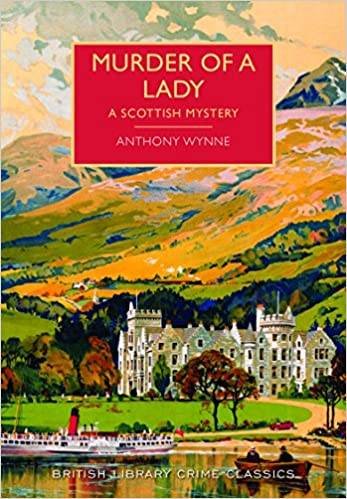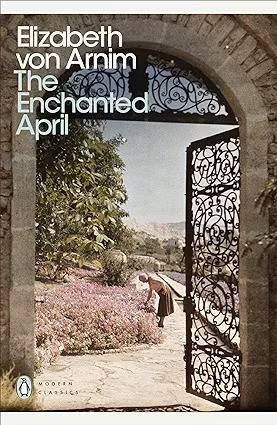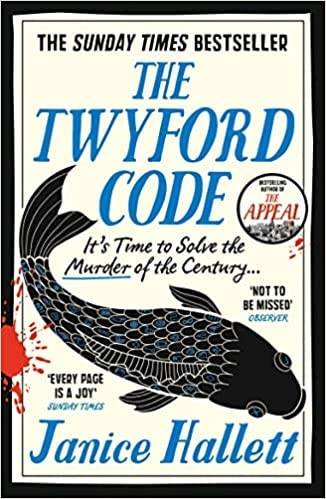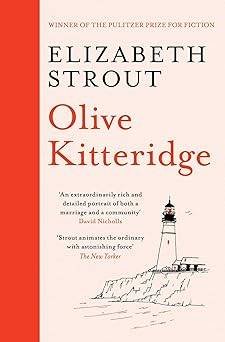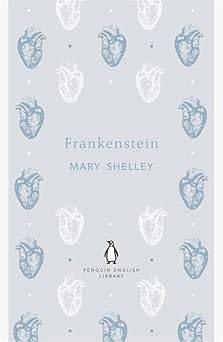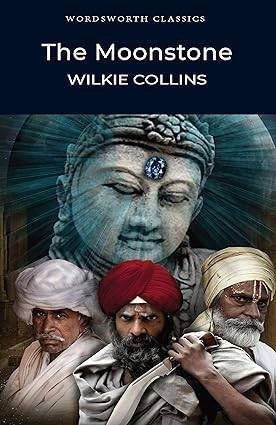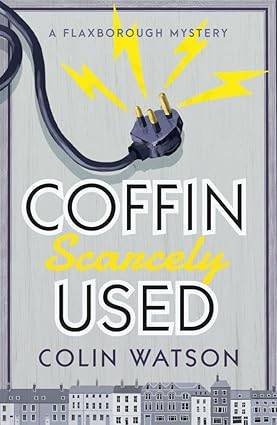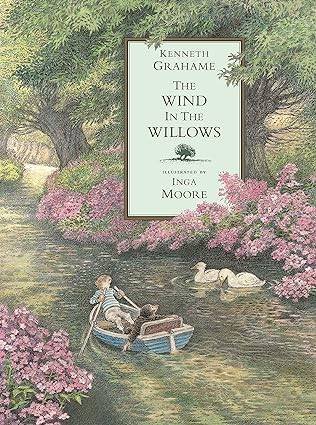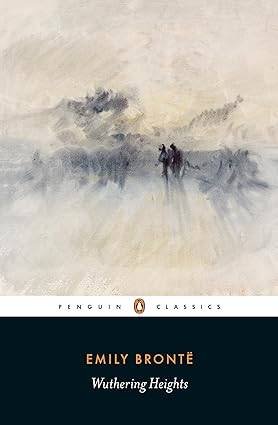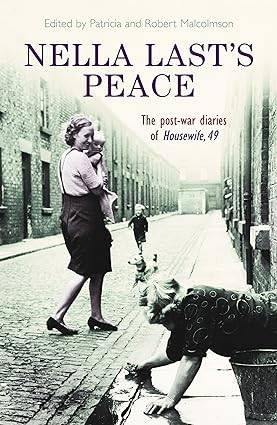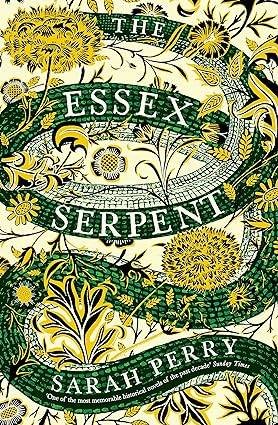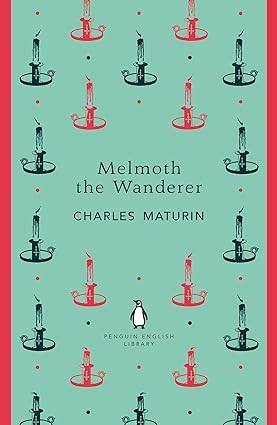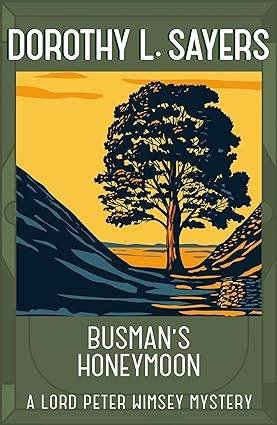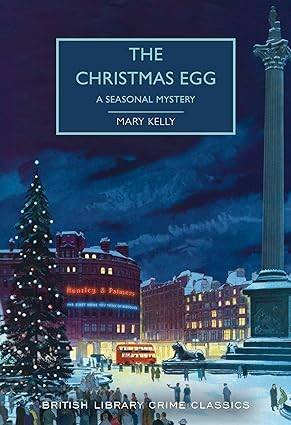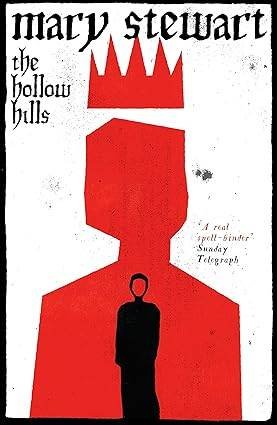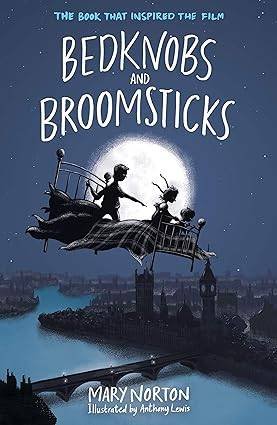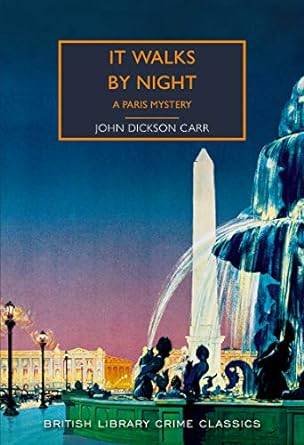Home » Book Reviews » Edith Nesbit » The Enchanted Castle by Edith Nesbit
Possible spoilers ahead
I’m charmed straightaway just by the title of this book, a tale about an enchanted castle sounds wonderful! I’ve not read any of Edith Nesbit’s books before, although I am of course familiar with The Railway Children story but only from watching it on tv. And I see this book was written in 1907, which just adds to the charm too, I feel.
Kathleen and Gerald and Jimmy can’t go home for the school holiday as there is a relative staying there who has measles, so they stay at Kathleen’s school being supervised by a French governess. However, they are determined to seek out adventures during their holiday, and look for secret places like a cave or castle. They then find a secret entrance into the grounds of Yalding Castle, and the castle grounds have lakes, statues, waterfalls, fountains, terraces, temples, and a maze. They see a red piece of string attached to a thimble, and follow this string which leads them to the heart of the maze where they find a girl sleeping, she reminds them of the tales of sleeping princesses so they try to wake her with a kiss and she wakes up. She says she is Princess Rosamond and she has been asleep for 100 years after pricking herself on a spindle. She invites them into Yalding Castle, which she says is an enchanted castle, and in one of the rooms of the castle she magically makes drawers appear with jewellery inside them. She then admits that she is actually Mable Prowse, the housekeeper’s niece, and that she had heard the children talking about magic and princesses so pretended to be a princess and she then shows them the secret button that makes the drawers of jewels appear and disappear. She then puts on a ring from the drawer and makes a wish, but is shocked to realise that she is now invisible and the ring won’t come off her finger. Mabel doesn’t think her aunt would understand what has happened, particularly as her aunt has been stern lately to Mabel and told her she doesn’t care about her, so Mabel decides to live secretly with the children at the boarding school. Eeeek, how exciting it all sounds! I was disappointed at first when Mabel said that all her stories and magic were just lies and tricks as I was so much wanting magic to happen, and then it does! And a magic ring that makes you invisible, wow, the possibilities for the children are surely endless with that! And the grounds of Yalding Castle sound wonderfully gorgeous. I like the children in this book too, especially Gerald who has a ‘way of telling a story’ that sounds like he is reading from a book, bless him, he makes me chuckle when he says things like ‘The bold captain, reproving the silly chatter of his subordinates…’ and ‘Our hero, who nothing could dismay, raised the faltering hopes of his abject minions’, I love these humorous asides and commentaries, and it also shows how well read he is with the words he uses, and also that he must have stories playing in his head all the time (and what a wonderful way to live your life!).
The children decide they can’t keep stealing food from the larder for Mabel so they must earn some money and do this by performing conjuring tricks at the local fair using Mabel’s invisibility, which is a success. Mabel then realises she can now take the ring off, so Gerald then puts it on to make himself invisible but he then can’t take the ring off again to make himself visible. Now Mabel is visible again, she goes back to Yalding Castle and her aunt, and invisible Gerald goes with her. Mabel’s aunt is now pleased to see Mabel and says she thinks she must have been feeling unwell the other day as she remembered feeling like she didn’t care about Mabel whereas she knows she always has cared for her. Gerald concludes that Mabel’s aunt must have been temporarily affected by the magic in the castle, and this caused her to stop caring for Mabel. Gerald feels affected by the magic himself when he walks around the grounds, and he then sees the stone statues move, including one of a dinosaur. Gerald then remembers that they left the door open to the room with the jewels so heads there to shut the door, but he discovers burglars inside the castle stealing the silver. He alerts Mabel and her aunt by throwing a note through the window, but the burglars are gone by the time the police arrive. Gerald has followed the burglars however, due to being invisible, and he has watched them hide the stolen goods and heard their plans. He goes to bed still invisible but wakes up visible, so the children then go to the local police officer telling him what Gerald discovered about the thieves, so they can be caught that night when they collect the stolen goods. Hmmm, it’s interesting that the ring can sometimes be removed and sometimes not. And I also love how the magic in the air had affected Mabel’s aunt, as the idea of the magic just floating around is so enticing, and I also chuckled at how the author had no doubt appealed to her young readers by having the magic affect adults in a bad way whilst it affects children in a fun way! And eeek, the walking statues are amazing, especially the dinosaurs, I wonder if this book has been made into a film as I can imagine scenes like those must be wonderful to watch! Gerald’s plan of climbing up the ivy to the jewellery room and him discovering thieves, reminds me of Enid Blyton’s wonderful Famous Five books! And I love the way that the author writes in quite a grown-up way to the young reader, it’s also quite humorous too, particularly the way the children speak and gently tease each other. I also love the way she talks to the readers too as it makes it feel so personal and like she’s speaking directly to you, such as ‘I wish I had time to tell you…’, and ‘Jimmy’s thoughts, of course, I can read like any old book’, and she again does this with a humorous tone too, such as ‘Those of my readers who have gone about much with an invisible companion…’ and ‘he would like to know, whereas I don’t care tuppence’, as well as wise words too, such as ‘There are some days like that, you know, when everything goes well from the very beginning, all the things you want are in their places, nobody misunderstands you, and all that you do turns out admirably’.
Eliza, the maid, ‘borrows’ the ring when she finds it in Gerald’s bed, and she now turns invisible. The children take her to the castle grounds, mainly to prevent her invisibility being discovered by others. As the sun goes down Eliza can see the statues moving, though the others who are visible can’t see them moving, including Gerald who saw the statues before. The ring comes off Eliza’s hand, and the children convince her it was all a dream prompted by her guilty conscience at ‘borrowing’ the ring. Hmmm, so the statues moving can obviously only be seen by those who are invisible. And I chuckled at the children convincing Eliza that it was all a bad dream due to her guilty conscience! I also love all the practical details that the author includes, such as the invisible person’s shadow showing on the ground and the need to try and conceal this when the person walks along, and that the clothes that an invisible person is wearing are also invisible until they take an item of clothing off (such as a hat) which can then be seen, and that an item of food can be seen being picked up by an invisible hand but once the food goes into their mouth it can no longer be seen, it’s all just wonderfully thought out and makes it all seem so real, I love details like this!
Mabel visits the children, who are with the school governess, and she explains to them the history of Yalding Castle. She says that Lord Yalding was disinherited by his uncle for wanting to marry a lady below his social standing, so Lord Yalding owns the castle as it was entailed to him but without his inheritance money he can only afford to pay for its upkeep and can’t afford to actually live in it. She adds that Lord Yalding didn’t end up marrying the lady he loved as she ran away to a convent and although Lord Yalding has tried to find her he has not been successful. The children act out a play for the school governess, having created a pretend audience from coats and paper faces and golf clubs. Mabel is wearing the ring but it hasn’t made her invisible this time, however when she absentmindedly wishes that the pretend audience could actually be real and applaud their performance, the pretend audience comes alive! The children are quite scared of them as they look very odd and move strangely, they nick-name them the Ugly Wuglies. The children lead the Ugly Wuglies to the castle and hide them in a secret passage in the grounds until the magic disperses. The new bailiff at the Castle sees them doing this and insists on knowing what is going on, so Gerald reluctantly tells him but he clearly doesn’t believe the explanation about the magic ring. The children go back to the secret passage the next day, hoping to find the Ugly Wuglies have changed back into coats and golf clubs and paper faces, but instead they find the secret passage open and the Ugly Wuglies gone, and see the bailiff unconscious on the ground so they realise the bailiff must have thought they were real people and tried to free them. They revive the bailiff, who thinks it was all a dream, and then search for the Ugly Wuglies and find them in the castle grounds now turned back into clothes and golf clubs. However, one Ugly Wugly hasn’t turned back into clothes and has created a whole life-story for himself, saying he is very rich and works on the stock exchange. Jimmy is now wearing the magic ring and he suddenly wishes he was rich too, and he then changes to an elderly grown-up. Jimmy now doesn’t know the other children, and he gets on a train with the Ugly Wugly, saying they are going to their offices in London. Gerald follows them and manages to convince the Ugly Wugly to get the ring from Jimmy and pass it to him, and once Gerald has the ring he immediately wishes that he and Jimmy are in the secret passage at Yalding Castle. They are transported there and Jimmy is young again, and Kathleen and Mabel rescue the boys from the secret passage. Hmmm, so now it’s a wish-granting ring rather than an invisible ring. And eeek, I can imagine those Ugly Wuglies were a bit scary (and I wonder if I could end up regretting my hope that the story has been made into a film, as I could see these Ugly Wuglies becoming like the Child Catcher in Chitty Chitty Bang Bang and haunting me!). What imagination this author has! And I wonder if the story of Lord Yalding and his lost love will be relevant, and there’s now the new character of the bailiff too.
The children decide it will be safer to put the magic ring back in the secret jewellery drawer. They do this, but then begin discussing the ring and all they have learnt about it and how the magic works, and end up disagreeing about this. Mabel states she believes that the ring becomes what the wearer wants it to be (rather than being either a ring to make you invisible or a ring to grant you wishes) and to demonstrate this she puts the ring on and says that the ring will now be a ring that will make the wearer four yards high, and she then promptly grows to that length. Kathleen states it is a wishing ring and puts the ring on and wishes she was a statue, and she promptly turns into a statue. Both girls need to stay in the grounds of the castle overnight in order to wait for the magic to wear off, but the boys go back to the boarding school so as not to alarm the governess with their absence, and they make an excuse for the girls. When the moonlight comes out, Kathleen can move like the other statues do and she can talk to them. One of the statues, Phoebus, suggests that Mabel uses the ring to wish she also becomes a statue and she can then join them all swimming in the lake and eating their nightly feast, which Mabel does, and she also wishes that the boys are statues too so they can also join them. Phoebus says that statues can hear and talk and see as well as move during the time of enchantment, that they feel no fear and also have athletic proficiency and are immortal. He also says that everything in their world is increased by seven times compared to the world of the children’s, and the children see seven moons reflected in the water of the lake even though there is only one moon when they look up to the sky. Phoebus also gives them advice about the magic ring, saying they need to be more specific with their wishes and state when they want the magical change to end. Ooooh, I was firstly getting a little frustrated at the start of this section with them bickering about the ring and then putting it on and carelessly making wishes that caused them to change, I was wondering how many times the author could have them do this. But then we get the statues and the details of their lives, and I love that everything involves the sacred and mysterious number seven, this reminds me of Harry Potter and the importance of the number seven in those books (as indeed in lots of other magical tales, as well as in religion too). And I just love love love all the details of magic and the ring that the children have learnt, I am full of admiration and gratefulness to the author for creating all this detail. Some of the details that fascinated me were that the ring only stays on someone’s finger for a certain length of time and that these lengths of time are divisible by seven (eeek, the magical sacred number seven again!), as the first magical event lasts for 21 hours, the second for 14 hours, the third for seven hours. And that when you are wearing the ring, other people who usually care for you no longer care for you until the ring is taken off again, hmmm, I’m intrigued why the author included this rule, perhaps to put in a disadvantage of wearing the ring all the time so the children aren’t tempted to do that as the wearer then feels excluded and lonely and uncared for, or perhaps it’s because whilst the magical event is happening the wearer is actually part of the magical world rather than the real world so they are then excluded from people in the real world. And that the person wearing the ring isn’t afraid of anything he or she sees, unless they touch what they are fearful of, hmmm, so this is like the statues then who feel no fear. And that the ring won’t let you wish for a previous wish to be undone, hmmm, I like the tidiness of this and also I guess it demonstrates that there are consequences to our actions (even in the magical world) so the wearer of the magic ring should be responsible and considerate with their wishes. I love how much thought the author has put into this!
The feast with the statues begins, and the food and drink is the most delicious that the children have ever tasted and the music that the statues play is more beautiful than any they have ever heard. The statues explain to the children that all statues come alive when the moon shines but that statues in ugly cities often choose not to come alive as there is nothing nice for them to look at, and that there is one night a year that people can see the statues move without needing to wear a magic ring and this night is the festival of the harvest which is in 14 days’ time from then, when the moon will strike a perfect beam of light into the Temple of Strange Stones in the grounds of Yalding Castle, and on that night the statues are obliged to answer any question put to them by a ‘mortal’. The statues also tell them that the magic ring is ‘the’ ring and is the heart of magic. The children return to normal and then realise they are on the island in the lake and none of them can swim. They also realise that the statue Psyche now has the ring. They walk around the island hoping to see a boat, but Gerald trips and falls down the steps of a secret passage. They all venture down the passage, which leads to a huge hall full of arches and light which is the Hall of Granted Wishes. They realise the light in the hall comes from the statue Psyche, and Gerald takes the magic ring from the statue’s finger. Kathleen uses the magic ring to wish they were all home in bed. Hmmm, I was a bit puzzled by this Hall of Granted Wishes and what it actually represents with its archways containing pictures of moments when life had sprung, such as two lovers holding hands, a ship on the sea, a king on his throne, a mother bending over a cradle, and an artist gazing at the painting he’d just created, I will have to look up Phoebus and Psyche as I am presuming all this is linked with Greek mythology. However I loved the beautiful description of how the music made the children feel, including that ‘all the lovely thoughts that sometimes hover near but not so near that you can catch them, now came home…all the beautiful dreams of all the world came fluttering close…(they) forgot time and space and how to be sad’.
The children meet the bailiff again, and Jimmy is keen to convince him that they are telling the truth about the magic ring so he gives the bailiff the ring to make a wish with. The bailiff wishes for his love to be there, and the school governess appears. The bailiff is actually Lord Yalding, and the governess was the lady he was forbidden to marry. The governess explains that she was sent to a convent by her guardian as he considered Lord Yalding too poor without his inheritance and her guardian wanted her money for himself. They agree to marry, but whilst wearing the ring that night Lord Yalding sees the statues move and fears he is going mad so calls off the wedding. However, it is now the night of the festival of the harvest and the children take Lord Yalding and the governess to the Temple of Strange Stones in the grounds of the castle. They are all overwhelmed when the moon shines into the centre of a flat stone within a circle of stones, feeling like ‘every place that one has seen or dreamed of is here’. All the statues of the world gather there. The children had planned to ask the statues questions that night, knowing that mortals are allowed to do so then, but in the end they don’t ask anything as they feel that at that moment ‘all things are understood without speech’. When the moonlight fades they all sleep, and when they awake the statues have gone. They all then go to the Hall of Granted Wishes, and the statue of Psyche speaks through the governess saying that the magic ring was given long ago to an ancestor of Lord Yalding’s in order that a castle and garden could be built partly by using magic and partly by using traditional building techniques. Psyche also says that the magic ring exacts a payment from the wisher, apart from when used by children, so Lord Yalding’s wish to have the governess come to him resulted in him feeling like he was mad which was the payment exacted from him by the ring. She says only the final wish of the ring is a free one with no payment to be exacted, so the governess then wishes that all the magic that the ring had granted be now undone and that the ring becomes nothing more than a wedding ring for her and Lord Yalding’s wedding. Psyche’s statue then becomes a grave, the Hall of Granted Wishes is gone, and most of the magical enchanted parts of the castle and grounds are also gone. However the jewels in the secret drawer are left and these provide money for Lord Yalding and his new wife to live on. After they are married, the children often stay with them at Yalding Castle. The author implies at the end of the book that the children have pretended that she invented the whole story, but she says in the final words of the book ‘facts are facts, and you can’t explain them away’.
Well, I was a bit disappointed at the implication at the end of the book that the enchanted castle and everything that happened was just a pretence, but I am taking heart from the author seeming to say that it was all true! And I have to admit that I felt the governess was a bit of a spoilsport with her wishing that all the magic be undone, that seems such a shame. Plus it means there can be no follow-up book, which is an even bigger shame! And again, this magic at the Temple of Strange Stones and the Hall of Granted Wishes puzzled me a bit, it seemed very romantic, almost otherworldly, or like a religious heaven. It kind of felt like there was a message that the author was intending to convey to the reader, perhaps a religious message? It reminded me of the religious message in The Lion The Witch and The Wardrobe with the lion seeming to be god-like and being sacrificed, and even in the final Harry Potter book with Harry being in a heavenly-type place when he ‘dies’ and meeting Dumbledore again who advises him as a god-like figure and Harry then being ‘resurrected’ in a religious-type of way. Obviously Harry is a far more modern story, but I wonder if fantasy books written in the time of this Enchanted Castle book were expected to have a religious guidance, or perhaps this was the view of the author, or perhaps I’ve mistaken the message entirely (or indeed there was no message!). But whether there was a message or not, it is just such a charming and beautiful book, I loved every moment of reading it, and I think the magical possibilities of the book are summed up perfectly by the line ‘There is a curtain, thin as gossamer, clear as glass, strong as iron, that hangs forever between the world of magic and the world that seems to us to be real, and when once people have found one of the little weak spots in that curtain which are marked by magic rings, amulets, and the like, almost anything may happen’, oooh, how tempting and enticing it all sounds!
I will definitely read more of her books and I see there are several other magical books she wrote, with The Story of the Amulet sounding particularly wonderful as it is apparently a time-travel book, and also I’m intrigued by her book for adults called Dormant which is apparently similar to Frankenstein and Dracula! I also have her books The Railway Children, and The Lark, and The Phoenix and the Carpet on my bookshelves waiting to be read so I am looking forward to reading those, I am definitely a Nesbit fan now! I’ve also been reminded by reading this book of many other wonderful children’s books (and I see on Wikipedia that Nesbit is credited with inspiring many of my favourite children’s writers) and it makes me want to re-read some of these I’ve been reminded of, such as Enid Blyton’s Famous Five books (particularly Five Fall Into Adventure with one of the characters climbing up an ivy-clad tower!), and JK Rowling’s Harry Potter books (particularly the final book Harry Potter and the Deathly Hallows which seemed to have a possible religious theme, like this book seemed to), and I’ve long been meaning to re-read CS Lewis’ book The Lion, The Witch and the Wardrobe.




